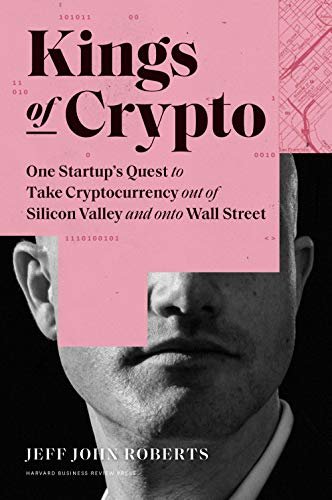The rise of cryptocurrencies: An excerpt from Kings of Crypto

In this excerpt from the forthcoming book ‘Kings of Crypto’, author Jeff John Roberts reveals the origins of cryptocurrency, with San Francisco buzzing around bitcoin.
The sun rose over the hills dotted with oak trees east of San Francisco on a clear and chilly morning. It was New Year’s Day, 2014, a year that would bring the disgrace of comedian Bill Cosby and the appointment of Janet Yellen as the first woman to head the Federal Reserve. Overseas, the US was confronting the rise of a terrorist group called ISIS, while at home, gay couples filed court appeals for the right to marry.
In Silicon Valley, tech investors made their first investments in a mattress-in-a-box company called Casper and a quirky work tool called Slack, while Forbes magazine would hail a ride-hailing service called Uber as one of the hottest startups of the year. And as Brian and the Coinbase crew shook off their New Year’s hangovers, San Francisco still buzzed about bitcoin.
The digital currency had pulled back from its giddy high of $1,100 in December, but still bounced around near $800- an astonishing development given that one bitcoin has sold for $13 at the start of 2013. Better yet, the regulatory cloud around bitcoin had started to lift after a lawyer named Patrick Murck had testified before the US Senate in November of that year about the benefits of a decentralised digital currency.
To the surprise of many, the senators expressed interest and even encouragement about bitcoin. For Murck, who testified as general counsel of a new group called the Bitcoin Foundation, the hearing was the culmination of a year’s hard work. Murck and an oddball assortment of other bitcoin advocates had launched the foundation as a sort of the crypto chamber of commerce, pushing to bestow an air of respectability on Santoshi’s creation.
It was not just bitcoin flourishing. Other cryptocurrencies had emerged with fan bases of their own world, and, like bitcoin, could be exchanged for real-world money. These included Litecoin, the off-shoot of bitcoin created by Coinbase’s Charlie Lee, but also off-the-wall creations like Dogecoin- a novelty currency inspired by a feel-good mem about a Shibu Inu dog, but which nonetheless became worth tens of millions in real-world dollars.
Meanwhile, a visionary programmer named Jed McCaleb, who’d founded the world’s biggest crypto exchange, helped launch a versatile currency called Ripple before hatching another one called Stellar. Today, Ripple and Stellar are together worth over $10 billion.
Meanwhile, competition had come for Coinbase. Barry Silbert, the company’s early investor, launched a company called Grayscale that sold bitcoin in the form of shares in a trust, which allowed investment funds- whose by-laws forbade them from buying it directly- to acquire exposure to bitcoin.

That wasn’t all. Cameron and Tyler Winklevoss, the twins who had parlayed their Facebook fortune into a bitcoin hoard, had backed a startup called BitInstant. Like Coinbase, BitInstant offered ordinary consumers an easy-on-ramp to the world of crypto as well as a service for merchants to accept bitcoin. Unlike Coinbase’s cold ‘Vulcan Banker’, Brian, its CEO was a gadfly twenty-four-year-old with a propensity for hard partying and who sat as a vice chair of the Bitcoin Foundation.
And in late 2013, a group of venture capitalists made a big bet on a company called Circle to challenge Coinbase, while Xapo- the service that stored bitcoin under a mountain- launched an easy-to-buy cryptocurrency tool as well.
Even if Coinbase had more competitors than ever before, it hardly mattered during the bitcoin bonanza of early 2014. A flood of first-time bitcoin customers meant the pie was growing and there was enough for everyone. For Coinbase, which took a cut of every purchase, the rush of newbies also meant a surge of revenue. The monthly numbers read way up and way to the right: a 7,000 percent annual increase in customers.
Meanwhile, Adam White, the indefatigable fighter jet veteran, persuaded more and more merchants to accept bitcoin. And it was no longer just obscure fro-yo vendors signing up. In a blitz of salesmanship, White also persuaded a series of giants, including Overstock, Expedia and Dell, to try out cryptocurrency.
Not long afterward, he added to the coolness cachet of Coinbase by signing a contract for the company to provide bitcoin services to Burning Man, the drug-fueled techie bacchanalia that takes place in the Nevada desert every August.
All of the merchant signups, combined with the roaring consumer market, meant 2014 should have seen Coinbase post growth results resembling a hockey stick worth of Wayne Gretzky.
It didn’t happen.
Reprinted by permission of Harvard Business Review Press. Excerpted from Kings of Crypto: One Startup’s Quest to Take Cryptocurrency out of Silicon Valley and onto Wall Street. Copyright 2021 Jeff John Roberts. All rights reserved





